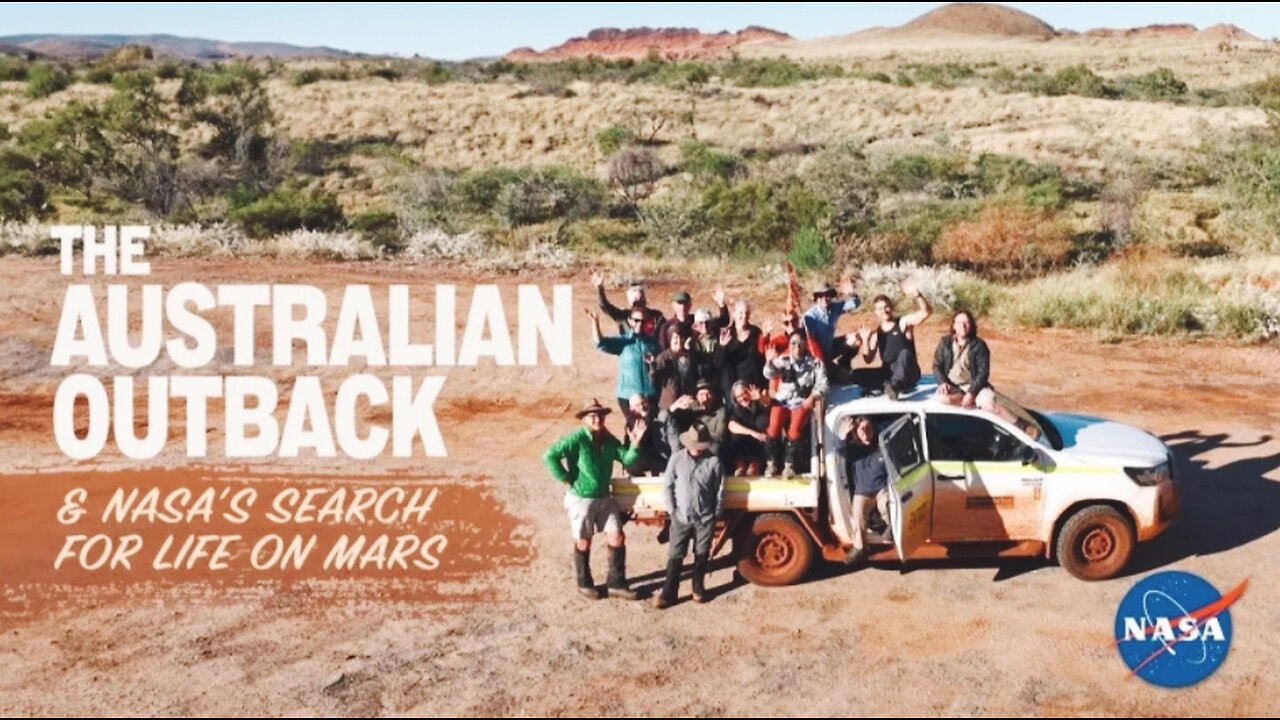Premium Only Content

The Australian Outback & NASA's Search for Life on Mars
How will we know if there is life on Mars? What geological clues can our Martian orbiters and rovers search for and collect samples of to return home to Earth?
Stromatolites in the Pilbara region of Western Australia may hold the answer.
In June of 2023, members of NASA's Mars Exploration Program, the Australian Space Agency, ESA (European Space Agency), and the Australian Commonwealth Scientific and Industrial Research Organization (CSIRO), joined together on an expedition to visit three incredible field locations containing stromatolites, fossils of ancient microbial life, and the oldest, most convincing evidence for life on Earth.
Stromatolites are rock features that are usually dome or cone-shaped, and are caused by photosynthetic lifeforms precipitating minerals throughout their life cycle, while continuously climbing upwards towards their energy source of the sun. Over time these microbial communities begin to form layers of rock that rise up to form strange shapes in the geological record that cannot be formed in any other way. Could these structures be found on other planets? On Mars?
As we search the solar system and beyond for biosignatures, or signs of life, it's crucial that we know as much as possible about the nature of life on Earth. Knowing how quickly life took hold on our planet, and how that life evolved over time, will help NASA scientists understand the possibilities for life on other worlds and how best to search for them. Mars and Earth may have had very similar pasts, and the surface of Mars shares many qualities with the stromatolite outcrops in Western Australia.
If life could take a foothold on Earth 3.5 billion years ago, could it also have taken a hold on Mars?
Learn more about the NASA Astrobiology Program: https://astrobiology.nasa.gov/
-
 18:28
18:28
DeVory Darkins
1 day ago $86.76 earnedCNN Goes NUCLEAR on Elon Musk with SHOCKING Allegations
262K489 -
 LIVE
LIVE
Stephen Gardner
56 minutes ago🔥 Col. Macgregor Reveals Putin's Hypersonic Strike Plan – Is Ukraine Ready for Revenge?
837 watching -
 1:10:25
1:10:25
Professor Nez
2 hours ago🚨Trump Just Unleashed the Deep State's WORST NIGHTMARE! (FULL BREAKDOWN)
1.33K9 -
 28:09
28:09
Michael Franzese
12 hours agoThese Athletes Are STEALING Gold Medals From Women | Deep Dive
30.2K19 -
 LIVE
LIVE
TheItalianCEO
5 hours agoGTA V RP First Time EVER (help)
988 watching -
 15:22
15:22
Russell Brand
2 days agoSO IT BEGINS.....
224K349 -
 5:41
5:41
Chef Donny
2 days agoPan Frying Dumplings With Thanksgiving Leftovers | Tasty Tailgating Ep. 12
21.4K1 -
 LIVE
LIVE
Scottish Viking Gaming
5 hours ago🔴LIVE | STALKER 2 | Sunday Funday | The Zone makes my Brain Fuzzy
155 watching -
 3:57:16
3:57:16
LumpyPotatoX2
5 hours agoNew Fortnite Season - #RumbleGaming
9.94K3 -
 15:06
15:06
Forrest Galante
21 hours agoShooting Invasive Flying Carp with a Bow
144K48